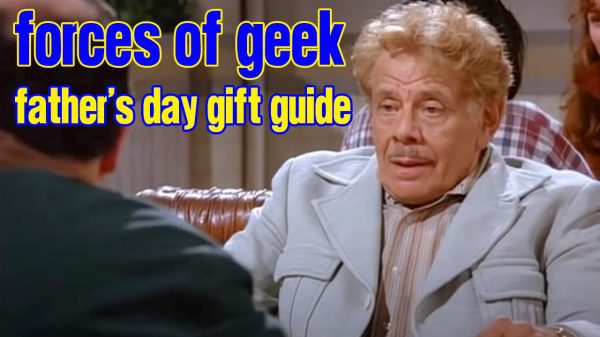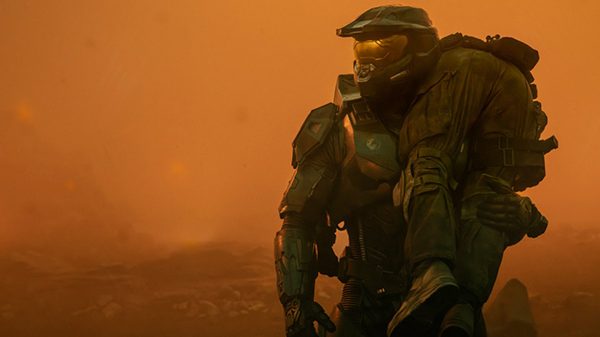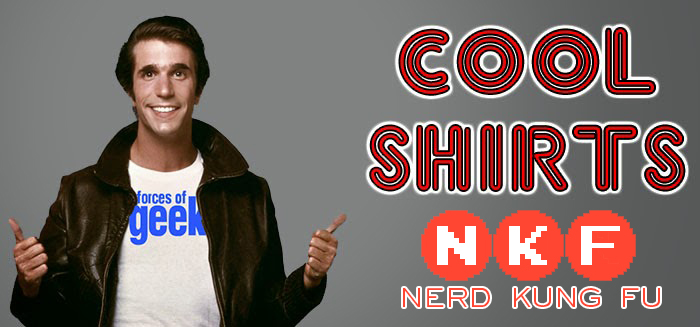Today’s post covers the plethora of goodness the cartoon world had to offer in 1931.
Bear in mind that we’re still in the middle of the Depression and Prohibition, despite the fact that the cartoons released at this point are generally happy and upbeat, and feature excessive amounts of drinking.
We’re also a few years ahead of the enforcement of the Hays Code in 1934, meaning that the shorts of this period have a healthy dosage of risqué / off-color humor.
More specifically related to 1931, this year marked the beginning of the Merrie Melodies series at Warner Bros., the Scrappy series at Charles Mintz and the Tom & Jerry series at Van Beuren (although not the Tom & Jerry that you’re thinking of). Mickey Mouse was still leading the pack in popularity at this point, although Betty Boop (who gained a name and became a human this year) was also starting to gain an audience.
On this list you’ll find popular characters like Mickey and Betty, as well as some more obscure cartoon stars like Flip the Frog, Scrappy and even Piggy.
Let’s get started:
BIMBO’S INITIATION
Directed by Dave Fleischer; Max Fleischer
This short, which features Bimbo being kidnapped by a cult that puts him through a series of tortures in order to convince him to become a member, is perhaps the most perfectly realized of the Fleischer Talkartoons and one of the most imaginative short films ever made. The film has been described as being like a nightmare, and although that applies to many cartoons of the early ‘30s, it’s particularly true of this one; Bimbo aimlessly journeys through a never-ending house of horrors, constantly and illogically thwarted in his attempts to escape as demented cultists and a mysterious seductress played by Betty Boop pop in and out of the picture at random. The mad futility of the whole thing is perhaps emphasized best in one sequence where Bimbo hops onto a bicycle that repeatedly slaps him in the rear as the bicycle stays motionless.
Just about any phobia you can imagine is trotted out here: Bimbo gets shut into a perpetually spinning room, trapped underneath a spiked beam being held up by a burning rope and sent running through an obstacle course of chopping axes and closing walls. Glimmers of hope are consistently dashed, as recently-entered doors turn out to be painted walls and splashing swimming pools turn out to be hard surfaces. Almost every element of this cartoon invites Freudian analysis, from the masked cultists who wear candles on their heads, to Bimbo being offered a choice between several doors marked with a skull and crossbones, the number “13”, a question mark and a hand-shaped inkblot.
Also worthy of discussion is Betty Boop’s provocative role in the hysteria; her invitation to “come inside, big boy” results in an endless series of ever-smaller doors, which is as good a visual representation of sexual frustration as any. Animation historian Mark Langer even suggested that the knives and axes that block Bimbo’s way to Betty symbolize his fears of castration, and although one might question if that was really the filmmakers’ intention, the fact that such a reading is possible tells you the kind of strange recesses of the psyche the cartoon delves into. Bimbo’s lust for Betty eventually softens his previous resilience against joining the cult, satirizing the horrors people will subject themselves to for the possibility of sex. Still, the short wears its pre-code status on its sleeve by rewarding Bimbo’s libido in one of the most gloriously unlikely and disturbing “happy endings” ever committed to film.
The short is exceptionally well-directed and animated for a 1931 cartoon, with lots of impressive camera angles and backgrounds moving in perspective, and the character animation is uniformly excellent (if you compare it to the previous year’s mind-blowing Swing You Sinners, you’ll see that the drawings in Bimbo’s Initiation are tighter and more consistent without sacrificing any of the rubbery creativity). Betty’s rear-smacking dance for Bimbo is a highlight (the combination of Betty’s wiggly motions and her exotic scatting put the sequence somewhere between a seduction scene and an absurdist parody of one) but there’s too much M.C. Escher-style visual excitement here to take in one one viewing. This is a film that belongs on a list of greatest cartoon shorts ever made, not just of 1931. “Wanna be a member? Wanna be a member?”
BOSKO THE DOUGHBOY
Directed by Hugh Harman; Warner Bros.
It’s interesting but perhaps not surprising that during the Great Depression, one of the grimmest periods in American history, some of the cheeriest films and songs were produced. Theater-goers flocked to escapist musicals decorated in lavish art deco sets like Dames and The Gay Divorcee, and good-natured tunes like Happy Days Are Here Again, Pennies from Heaven and We’re in the Money were big radio hits.
Bosko, as a character, is a great example of this upbeat trend. Throughout his early appearances, Bosko stayed impossibly chipper while hunting wild game in Africa, traveling in a box car like a hobo, laboring as a construction worker and even chasing down a wanted outlaw. But seeing Bosko attempt to maintain his optimism while in the trenches of a bloody war is poignant in a way that is unmatched by any other entry in the series. Of course, Bosko was already placed in the middle of a war in The Dumb Patrol (1931), but that cartoon portrayed war much more simplistically, with Bosko and Honey clearly on the “good side” while the sniggering, leering enemy rode around in an airplane with a skull on it. In this cartoon, it’s impossible to tell who is on what side, or what they all might be fighting about, and the usual Harman-Ising visual gags suddenly have a very black humor to them when seen in the context of characters getting shot full of holes and blown to high heaven.
The total arbitrariness of the war and the lighthearted handling of battlefield slaughter give the film an almost nihilistic edge. It’s unclear how intentional such a reading is (although director Hugh Harman later gained notoriety for his 1939 anti-war fable Peace on Earth), but the effect is in some ways similar to the one achieved in the Marx Brothers classic Duck Soup, despite the obvious differences in styles of humor: Harman and Ising seem to satirize the act of war by treating it with the same lack of seriousness they would treat any other subject, just as the Marx Brothers’ skewering of war was no different than their razzing of less serious subjects like college football or opera.
As for Bosko, his cheeriness wavers when both his food supply and picture of Honey get destroyed, but a high-spirited horse advises him to “cheer up” and the two make music together. By the end, even mass destruction can’t get Bosko down: when a bomb blows up in his face, he shoots back with an Al Jolson impersonation (“mammy!”).
THE CHINA PLATE
Directed by Wilfred Jackson; Disney
Arguably the best of the black & white Silly Symphonies (alright, not including The Skeleton Dance), this charming short tells the tale of a Chinese boy and his bird friend who save a girl from her heartless father and a ferocious dragon.
This film feels like a step forward for the studio, with its focus on story rather than music and dancing and its stylistic attempt to evoke ancient Chinese art. Certainly the depiction of Chinese culture here is highly caricatured, but there is a conscious attempt to give the short a different atmosphere than earlier Silly Symphonies (this is helped along by Frank Churchill’s mystical score), and the attractive, orientally-tinged backgrounds create more visual interest than the generic barnyard setting seen in previous Disney shorts.
The boy-saves-girl narrative is pretty simple, but there’s a lot of skill in the storytelling, with the decorative plates that bookend the film and imaginative gags that compliment the action rather than distract from it. The business with the long-legged cart driver highlights the kind of good-natured silliness that can only be achieved in animation, and the grotesque face that reveals to be an umbrella is very clever visual gag. Speaking of reveals, the cave that turns out to be a dragon’s mouth is an excellent one, suddenly thrusting the audience from one fast-paced chase sequence to the next.
As for the characters, they fall into familiar hero-girlfriend-villain stereotypes, but there are some nice little personality moments that lend some believability to the characters (witness how the girl attempts to keep her balance before falling in the water). These gestures toward individualized characters and genuinely engaging storytelling would develop rapidly at the Disney studio in the mid-‘30s, but The China Plate achieves a certain perfection on its own.
MASK-A-RAID
Directed by Dave Fleischer; Max Fleischer
This film, in which Bimbo attends a masquerade ball and gets in a duel with a king, marks the first cartoon where Betty Boop is presented as a human being rather than a dog. It is also a particularly offbeat and wonderful cartoon, released at a point in the Fleischer Studio’s history when they were creating masterpiece after masterpiece (Silly Scandals, The Herring Murder Case and Minding the Baby all would’ve made perfectly sufficient substitutions for this short on the list).
This film’s humor is pretty strange from the get-go, but one of this short’s strengths is its escalating sense of weirdness. As the cartoon progresses, Bimbo dons a mask and sings a duet with the lustful king (who reappeared as a king again in the 1932 Betty Boop short Chess Nuts), covering the 1926 Harry Warren tune “Where Do You Work-a John?”; Bimbo eventually gets side-tracked, but his mask continues to sing, and soon another mask joins in for maximum comedic fireworks (the cross-eyed, wrinkled expressions on the masks are spectacularly drawn). And the singing continues into the short’s climax, with scenes of sword-fighting knights repeatedly interrupted by scatting mice.
As in most of the pre-code Betty Boop shorts, lust is the subtext here, and at times the double-meanings aren’t very far below the surface. In one scene, Bimbo and the king have a swordfight for Betty’s hand, with Bimbo clutching a tiny sword and the king wielding a large one. In his book Hollywood Cartoons, animation historian Michael Barrier comments that the “phallic symbolism is inescapable”. Betty encourages the guys to fight over her, in a role that in some ways seems more suited for the other queen of the Fleischer studio Olive Oyl, but Betty maintains a winning blend of flirtation (her rubbery shoulder-wiggling at Bimbo is entertainingly exaggerated) and modesty (she expresses annoyance when Bimbo stares at her legs, and she chops off the king’s beard when he keeps tickling her with it). One of the film’s funniest moments is the Good Samaritan dog who comes out of nowhere to stick a pin on Betty’s dress to stop it from flying up, kind of the reverse of the dog who shows up to kiss the girl cat in Bob Clampett’s classic A Gruesome Twosome.
Still, the cartoon’s best moment is the ending, where the knight leading Bimbo to the dungeon inexplicably turns out to be Betty, who offers to marry him. This leads Bimbo into a celebratory scat session that is truly unforgettable, making for one of the best endings in the Boop canon.
MENDELSSOHN’S SPRING SONG
Directed by Cy Young
This short, which for many years was only available in black and white and was recently restored to its color glory by Steve Stanchfield of Thunderbean Animation, is an independent film using an early two-color process called Brewster color. Animators had been experimenting with color as far back as Winsor McCay’s 1911 short Little Nemo, but this is still a fairly early use, predating Walt Disney’s groundbreaking three-strip Technicolor short Flowers and Trees (1932).
Not a whole lot is known about the cartoon – it’s suspected that it was commissioned by Brewster Color – but it attracted the eye of Walt Disney, who hired director Cy Young to head up his special effects department, and went on to do fantastic and groundbreaking work on Snow White and the Seven Dwarfs, Fantasia and Bambi.
The film is, for the most part, a showcase of various visual tricks and effects, and although the short doesn’t have much in the way of plot or gags, the impressive visuals coupled with the titular tune make for a nice little mood piece. The blend of animals cavorting to a musical beat and experimental use of color and imagery make the film seem like a cross between early Silly Symphonies like Springtime and Night and the abstract animation of filmmakers like Len Lye and Norman McLaren (one brief moment inside a tunnel feels like a purely abstract animated light-show).
The limited palette of reds and greens is effectively handled, and there are some excellent shots here, such as the movement towards the mountain that dissolves into an undershot of a train. Again, this film is more about visuals than gags, but some of the ideas here are amusing and clever, such as the bug’s finger detaching to play the violin and the train that transforms into a caterpillar (the animation of which is wonderfully elastic). There’s also a great moment towards the beginning where a sign whacks the sun on the head, a witty twist on perspective that feels like something Otto Messmer might’ve come up with. The animation is choppy in places, and some moments drag a bit, but it stands out from other cartoons released in 1931.
Trivia: pioneering female animator Lillian Friedman did ink and paint on this cartoon, marking her first work on an animated film.
THE NEW CAR
Directed by Ub Iwerks; Ub Iwerks
Conventional wisdom would have it that Ub Iwerks – Disney’s chief animator of the ‘20s and designer of Mickey Mouse – did fantastic work under Walt, but when he left to start his own studio he bit off more than he could chew. And that’s true to a degree – his studio never came close to rivaling Disney in popularity, and none of his starring characters achieved the durability of Mickey Mouse or Donald Duck. But the films produced during the Iwerks studio’s six-year run are vastly underrated, with a stranger and edgier sense of humor than was the Disney norm, as well as a more confident and vigorous drawing style (if you compare the Flip the Frog shorts with the Mickey cartoons being made around the same time, the Disney films actually come off as a bit stiff).
The New Car was Iwerks’ first short with Fleischer animator Grim Natwick on staff, and it would seem that Natwick’s energy gave the studio some extra pep; the film is wilder and funnier than the preceding Flip the Frog shorts, which were well-made but somewhat conventional and dull (Flying Fists, Puddle Pranks). Natwick’s penchant for animating attractive women likely supplied this short with one of its most amusing conceits: the anthropomorphic car flirting with Flip at the car dealership. It’s a funny idea, but the animation of the car putting on makeup and sashaying over to Flip is what really sells it. The animation is equally good during the short’s climax, when the car is inadvertently filled up on liquor. The car’s drunken stumbling is hilarious, but it’s punctuated by a lot of nice little touches, like the car smacking its lips in satisfaction and flailing its “arms” when it reaches a cliff.
As for Flip himself, his design here is somewhere between his early frog-like appearance in his maiden voyage Fiddlesticks and the abstract cartoon being he became by the end of the series’ run. He was never a character with a lot of distinctive qualities, but the films themselves have a certain downbeat cynicism to them (1932’s What a Life makes several bitter jokes about poverty and concludes with our two heroes being sent to prison) and this spilled over into the leading man’s persona, giving him an anti-authority edge that the far-cheerier Mickey Mouse and Bosko never had.
This attitude is evident in the disrespectful treatment of the traffic cop here (policemen are frequently portrayed as villains and/or bumbling oafs in the Flip the Frog shorts), and the cop’s bit turns out to be perhaps the funniest moment in the film. But it has quite a bit of competition: there’s the bird’s retort upon eating a nut that fell off of the car, and one extremely funny not quite off-color gag where something unpleasant drops on Flip’s shiny new car (I’ll let you see for yourself). The out-of-control car ride is nothing we haven’t seen before, but it’s animated well and serves as a nice capper to a very funny film.
SUNDAY CLOTHES
Directed by Dick Huemer; Charles Mintz
Scrappy is not a character that exists very strongly in the public consciousness, but his films have a strong claim at being the best cartoon series of the 1930s outside of the Disney and Fleischer studios. Scrappy was created by Dick Huemer, who helmed the series along with Sid Marcus and Arthur Davis after Toby the Pup was put to rest, and they reflect not only Huemer’s highly appealing drawing style, but also the urban grittiness he brought with him from his days at the Fleischer studio.
While the Scrappy cartoons are indisputably a product of their era in animation history (and that’s one of their strengths), they have a subtly different feel than any other cartoon series being produced at the time. Scrappy, despite occasionally taking on adult jobs, is clearly a child in a way that few other character of the time are (is Bosko supposed to be a kid? Hard to say). And where many other pre-code characters exist in a totally abstract cartoon world, the Scrappy cartoons feel like a highly caricatured take on real life.
Sunday Clothes, for instance, kicks off with the relatable situation of not wanting to get your fancy clothes dirty, and then takes off on that premise in wildly cartoonish directions. And believe me, this is no cozy little tale of childhood – Scrappy’s neighborhood is filled with lowlifes and roughnecks, as evidenced by the gang of bullies who make it their sole mission in life to push Scrappy into a mud puddle, not to mention the immigrants that live in that puddle (in one of the film’s most memorable scenes, Scrappy mud-skis on an Italian man’s head while clutching his mustache).
As was previously mentioned, the drawings are outstanding; Scrappy became a bit more realistically-proportioned as the series progressed, but he never looked as good as he does in these early films where his pie-cut eyes are cartoonishly bulbous and his head takes up about half of his body. And the same goes for his scruffy dog Yippy, who is always fun to watch. There’s also some really great cartoony acting in this short from Scrappy, whose smug satisfaction while stepping out in his fancy duds is hilariously achieved. And scenes like the one where Scrappy washes his face, or when he unsuccessfully attempts to shut the blinds are fantastic bits of comic acting worthy of any live-action comedian.
A few other things to take note of, for the road: 1) the level of craftsmanship in this cartoon extends even to the grime behind Scrappy’s ears, which looks like modern art when wiped onto a towel. 2) it is revealed in the bathtub scene that Scrappy has no genitalia. 3) Scrappy, being a tried-and-true ‘30s cartoon character, keeps his gloves on even when washing his hands.
TRAFFIC TROUBLES
Directed by Burt Gillett; Disney
This is the second film on this list centering on a character driving an anthropomorphic car (the first being Ub Iwerks’ The New Car) and it’s similar in a variety of other ways. Both films feature a bullying policeman, a girlfriend of the lead character taking a drive and an out-of-control car ride initiated by the car swallowing something it shouldn’t have (in this case, Dr. Pep’s Snake Oil). And in both cases, the car ride involves a farm animal (for Iwerks, a goat; for Disney, a cow) and concludes with the previously humanized car seemingly dying in a car crash as our two leads sit in the wreckage and make light of the situation. There’s even an identical gag in both where the car squeezes in-between two other cars to park.
This film doesn’t have the edge of the Iwerks version (this being a Disney film, the relationship between Mickey and his car is strictly platonic), but it has some strong character work and is quite amusing on its own terms. The film is chock-full of jokes, veering away from the amiable tone of earlier entries like The Shindig (1930) and The Birthday Party (1931) and inching towards the kind of fast-paced gagfests the Disney studio would be producing the following year, such as Mickey in Arabia and Touchdown Mickey.
The short is littered with funny sequences: Mickey’s battle with a tiny car in front of him is very entertaining and his attempt to fill up his car tire using a pig continues the Mickey Mouse tradition of abusing animals for use as props in a comical fashion (I also like the brilliantly nonsensical lead-in gag where the pump blows up instead of the tire). The bit where the cop demands answers from Mickey but interrupts him whenever he begins to speak is a wonderful scene that shows the Disney studio becoming more adept at achieving comedy through dialogue as well as visuals (by the way, Peg-Leg Pete seemingly plays two parts here, as the cop and the shabbily dressed miracle man).
Mickey, playing the part of a hapless taxi driver, is an affable leading man, and there are some nice character moments in the film; the way the car slumps when Mickey warns him against biting the car ahead of him is perfect, and Minnie’s distress when she is running late for her music lesson is simply but effectively conveyed. As usual for Disney, all of the technical aspects are strikingly achieved: the backgrounds moving in forward motion, along with the cow kicking its legs towards the screen, show some real drawing skills, and the scene where the car drives towards the camera as it avoids the crevices in the road is a nice update of a similar scene in the 1927 Oswald the Lucky Rabbit short Trolley Troubles.
Also, as in The New Car, the animation of the automobile on freakout mode is a highlight. Animator David Hand told animation historian Michael Barrier that he had to redo one of the taxicab scenes five times because Walt Disney kept telling him the action wasn’t exaggerated enough. On his sixth try, Hand decided to go so wild and over-the-top that Walt would have to tell him to dial it down again, but he was surprised when Walt looked at him with a big smile and said, “There! You’ve got it! Why didn’t you do it that way in the first place?” It’s unclear which scene Hand was referring to, but all of the animation of the car on the snake oil is suitably frenetic, and gives the film the kind of high-powered energy such a climax demands.
WOT A NIGHT
Directed by John Foster & Vernon Stallings; Van Beuren
While the names “Tom and Jerry” will forever be synonymous with the famous cat and mouse team of the MGM studio, there was an earlier cartoon series featuring characters named Tom and Jerry which was much stranger and more disturbing than Hanna & Barbera’s creations ever were.
These two human characters – one short, one tall – are oftentimes characterized as hobos and resemble Bud Fisher’s comic strip pair Mutt and Jeff. Tom and Jerry are actually humanized variations of an earlier Van Beuren team, Waffles & Don (a dog and a cat who most notably appeared in the 1930 classic Gypped in Egypt) and, like their predecessors, Tom and Jerry display a surprising amount of individuality for a low-grade studio like Van Beuren. Tom is a nervous nelly who jumps at any sign of danger and seems largely concerned with self-preservation, whereas Jerry is a level-headed but mischievous little guy who is amused by and casually interested in the strangeness around him. In basics, Tom freaks out even when he should be calm, and Jerry remains apathetic even when he should be frightened, and together they make a funny pair.
Wot a Night is their first cartoon, and although it’s sloppy in the usual Van Beuren ways, it contains a lot of creativity and an effectively dark atmosphere. There many great moments here, such as the cloud that plays the mansion like an organ, a bathing skeleton that is embarrassed upon being seen “naked” and the piano stool that suddenly comes alive to laugh at a skeleton pianist. There’s also an extended sequence here featuring a gospel choir of skeletons singing Jerusalem Mornin’, which is enjoyably upbeat despite the racial imagery (worth mentioning: the racial jokes in the Van Beuren cartoons generally come off worse than the ones at other studios because they didn’t have the artistic skill to lend any charm or humanity to the stereotypes, so they are presented somewhat baldly).
Still, the element of the cartoon that really makes it great, in my opinion, is the silent, bearded men who walk around bobbing their heads and appear at random moments in the film. They serve as the White Rabbits in this nightmarish Wonderland, and their unexplained presence along with their memorable design give the film an air of mystery that is never resolved.
And speaking of things left unresolved, the ending to this cartoon is especially peculiar, as Tom and Jerry discover that their torsos have been reduced to uncovered rib cages. As they run off for the iris-out, Tom is shown shouting in horror while Jerry somewhat oddly has a smile on his face. What is going through Jerry’s mind is anyone’s guess, but Wot a Night is a good showcase for two enjoyable and largely forgotten characters and a great example of the Van Beuren studio’s scattershot appeal.
YOU DON’T KNOW WHAT YOU’RE DOIN’
Directed by Rudolf Ising; Warner Bros.
Out of all of the cartoons produced by Harman & Ising, You Don’t Know What You’re Doin’ is the wildest and probably the most entertaining. The film is one of several early Warner Bros. shorts devoted to alcohol consumption (released while prohibition was still in effect, might I add), following The Booze Hangs High and Lady Play Your Mandolin. The latter short featured Foxy, Rudolf Ising’s attempt to create a starring character for the Merrie Melodies series while Hugh Harman handled Bosko in the Looney Tunes.
Foxy – who was designed to look like Mickey Mouse with pointed ears – only lasted three cartoons, and Piggy, his follow-up, only made it to two. But one of those two was this terrific short, which takes the madcap, hallucinatory abandon of Lady Play Your Mandolin and pushes it even farther (Piggy’s action-packed follow-up, Hittin’ the Trail to Hallelujah Land, isn’t half-bad, either; maybe Ising should’ve rethought pulling the plug on the character).
Piggy was probably never distinctive enough to helm a long-lasting series – his introduction here, riding up to his girlfriend Fluffy’s house on a sputtering motorcycle, is almost comically generic – but he does appear to be more brazenly obnoxious than most of his competition; he repeatedly disrupts the band he went to see, dismissing them as hacks, only to become arrogant and defensive when he gets heckled himself (Piggy’s musical back-and-forth with the drunkards in the balcony is laugh-out-loud funny).
Piggy’s snobbery towards the band is wholly unjustified, however, as the jazzy soundtrack to this film by the Abe Lyman Orchestra is one of the very best of its era. The combination of this fantastic music and Harman & Ising’s black & white rubberhose visuals make for fantastic entertainment, and nowhere is this more in evidence than the climax, where the drunk dog pours booze into a car and begins a wild ride through the city (for those keeping track, this is the third cartoon on this list where a car gets something in its system that causes it to go haywire in the short’s final act). The surreal, warping backgrounds go along exceptionally well with Orlando “Slim” Martin’s brilliant and distinctive trombone playing, creating a kind of perfection that can only be achieved through animation. As Piggy and the dog observe at the end, “Whoopee!”











































































































1 Comment
You must be logged in to post a comment Login